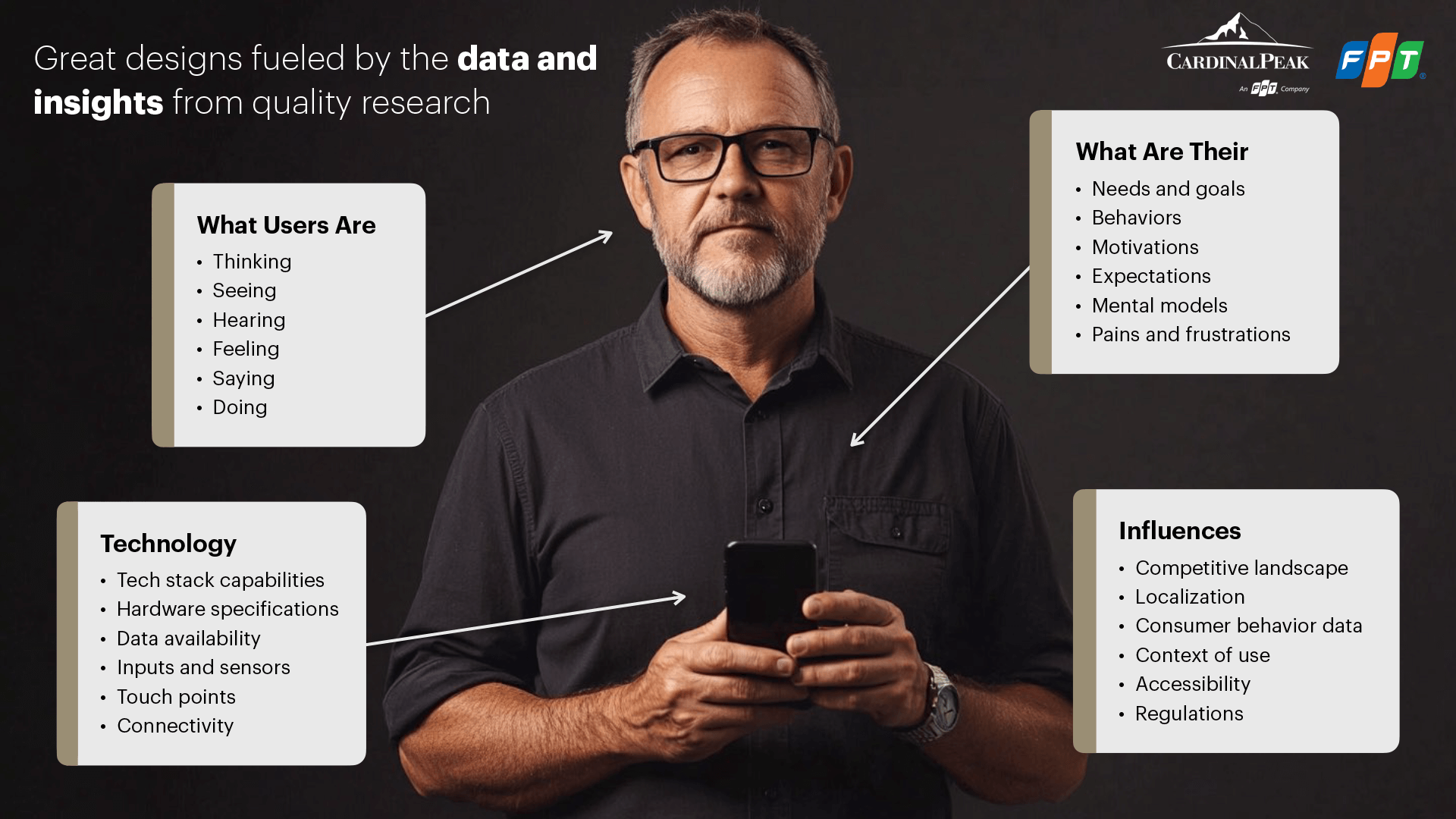Great designs are not a matter of guesswork; they are fueled by the data and insights that come from quality research. While creative vision is essential, the most successful products are those that are rigorously validated against the realities of user needs, technical constraints, and market influences. This is the core purpose of usability testing services: to move beyond assumptions and gather concrete evidence about the user experience.
But what should you be looking for in a usability test? A truly effective testing plan goes far beyond simply asking users if they “like” a design. At Cardinal Peak, we believe a comprehensive approach must investigate four key areas to provide a complete picture.
A Holistic Framework for Usability Testing

Contents
Understanding User Behavior: The Empathy Quadrant
The foundation of all user research is empathy. To build an intuitive product, you must first understand the user’s holistic experience. A well-designed usability test is structured to observe not just what users do, but also what they’re thinking and feeling. We structure our user testing services to observe and document:
- Thinking & Feeling: Are they confident or confused? Delighted or frustrated?
- Saying & Hearing: What feedback do they verbalize? How do they react to auditory cues?
- Seeing & Doing: Where do they look on the screen? Do their actions (the what) match their stated goals (the why)?
Uncovering Core Motivations: The Motivation Quadrant
A user comes to your product with a pre-existing set of needs, goals, and mental models. A great design aligns with these motivations, while a poor design clashes with them. Usability testing is the best way to uncover these critical insights. We focus on identifying their:
- Needs and goals
- Motivations and expectations
- Mental models (how they think the product should work)
- Pains and frustrations
Observing a user struggle with a task is the most direct way to identify a “pain and frustration” that your product can solve more elegantly.
Designing for Technical Reality: The Constraints Quadrant
In the world of product development, especially for connected devices, design does not exist in a vacuum. It is bound by the constraints of technology. An effective UX testing process must consider these technical realities. The insights gathered from users must be actionable within the product’s:
- Tech stack capabilities
- Hardware specifications
- Connectivity and data availability
For example, testing a feature that requires a constant, high-speed internet connection is only valid if the device’s hardware and the user’s typical environment support it.
Understanding External Influences: The Context Quadrant
Finally, users and technology are both subject to a wide range of external influences. A product’s success depends on how well it fits into the broader context of a user’s world. Our user experience consulting approach uses research to understand these factors, including:
- Competitive landscape
- Context of use (e.g., in a busy office, a quiet home, a moving vehicle)
- Accessibility and regulatory requirements
Conclusion: A 360-Degree View
Effective usability testing is about more than just finding flaws in a user interface. It’s a holistic research practice that provides a 360-degree view of your product’s ecosystem. By systematically gathering insights across these four key areas, Cardinal Peak helps you make evidence-based design decisions that reduce risk, delight users, and lead to truly great products.
Ready to move beyond guesswork and fuel your product with real data? Schedule a consultation with our team to design a usability testing plan that provides a comprehensive understanding of your product’s potential.
